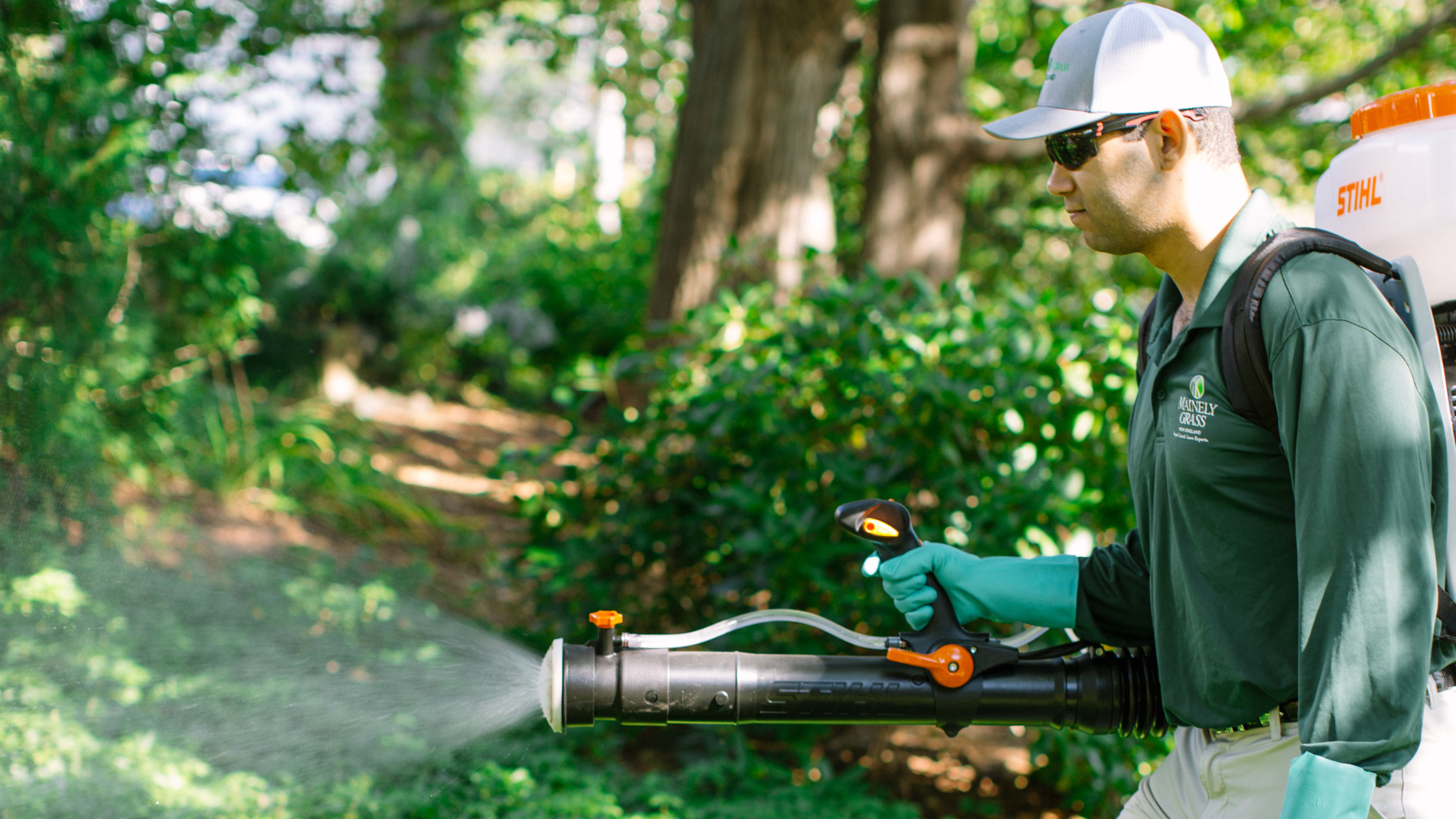As the flowers bloom and the temperature rises, it's time to step outside and embrace the wonders of spring. However, along with the beauty of this season comes the emergence of two notorious pests: ticks and mosquitoes.
Fear not! In this guide, we'll explore everything you need to know about springtime tick and mosquito prevention, understanding their lifecycles, the risks of tick-borne diseases, and the options for DIY versus professional control methods. Let's dive in!
How to Prepare for the Spring
Spring is prime time for ticks and mosquitoes to make their presence known. Follow these prevention tips to keep them at bay:
- Keep your lawn well-maintained by mowing regularly and removing any leaf litter or debris where ticks thrive. By reducing their opportunities, you increase your safety.
- Trim bushes and shrubs to reduce tick habitat and create a barrier between your yard and wooded areas. Ticks are unlikely to crawl across your yard, so having a perimeter barrier can make a big difference.
- Eliminate standing water sources, such as clogged gutters, birdbaths, buckets, and old tires, to prevent mosquito breeding. This can't be stressed enough. Mosquitoes only need a bottle cap worth of standing water to breed!
- Check for and seal any gaps or cracks in windows, doors, and screens to prevent mosquitoes from entering your home.
How Ticks and Mosquitoes Reproduce and Infest
Understanding the lifecycle of these pests is crucial for effective control measures:
- Ticks go through four stages: egg, larva, nymph, and adult. Each stage requires a blood meal for survival. Proper control means that blood meal won't be you, your family, or your pets.
- Ticks exhibit a behavior known as questing, where they climb to the tips of grass, shrubs, or other vegetation and wait with outstretched legs for a host to pass by. This behavior is most common among adult and nymphal ticks and is a primary method of seeking hosts for blood meals. This is why contact with these areas is the highest danger to people and pets.
- The primary hot spots for ticks include grassy and wooded areas, the bases of trees and in underbrush, along the edges of a lawn, in gardens or flower beds, shady areas, and around outdoor furniture and swingsets.
- Mosquitoes also undergo four stages: egg, larva, pupa, and adult. They lay their eggs in fresh water, salt water and stagnant water, and larvae develop in water before emerging as adults.
- As temperatures continue to warm up during mid to late spring, mosquito activity typically increases. Standing water sources become more abundant due to spring rains and runoff, providing ideal breeding grounds for mosquitoes.
- As mentioned previously, mosquitoes will congregate in any form of water, gutters and downspouts, birdbaths, tires, overwatered or flooded lawns, clogged drains, outdoor containers like buckets or barrels, and dense vegetation, especially with shade.
Springtime Tick-Borne Diseases
Ticks can transmit various diseases with Lyme disease and Babesiosis being the highest concern to New England. Be vigilant and aware of symptoms such as fever, rash, and fatigue:
- Lyme disease is the most common tick-borne illness in the United States, transmitted primarily by the black-legged tick (Ixodes scapularis) in the northeastern and upper midwestern regions.
- Symptoms of Lyme disease may include fever, fatigue, headache, and a characteristic bullseye rash. If left untreated, Lyme disease can lead to more severe complications affecting the joints, heart, and nervous system.
- Babesiosis is caused by microscopic parasites of the genus Babesia, which are transmitted to humans through the bite of infected black-legged ticks.
- Symptoms of babesiosis may range from mild flu-like symptoms to more severe complications, particularly in individuals with weakened immune systems or underlying health conditions. Treatment typically involves a combination of antiparasitic medications.
Do I Need a Professional?
While DIY methods can offer some relief, professional control measures provide comprehensive solutions:
- DIY methods include using insect repellents, wearing protective clothing, and implementing yard treatments. While some of these methods can protect your body, they don't treat the source of ticks and mosquitoes. Using pesticides for DIY yard treatments can also be hazardous to yourself and the environment without proper application knowledge or personal protective equipment (PPE).
- Professional tick and mosquito control services, like Mainely Grass, offer targeted treatments tailored to your property's needs. Compared to DIY methods, these treatments are formulated to have a quicker knockdown effect, will last longer, and are resistant to rainfall.
- We treat the entire property, including the wood line and/or edges of the property, to create a protective barrier that ensures we are reaching ticks and mosquitoes where they congregate and breed. Mainely Grass treatments include a special formulation to disrupt the reproductive life cycle of both ticks and mosquitoes as well as a sticking agent to better adhere to target locations for added longevity and resistance to post-treatment rainfall.
- As an added benefit to our customers, Mainely Grass offers free service visits for any concerns between program steps, part of our Love Your Lawn Guarantee.
In conclusion, by implementing these strategies and staying informed, you can enjoy a pest-free spring and make the most of this beautiful season outdoors.

